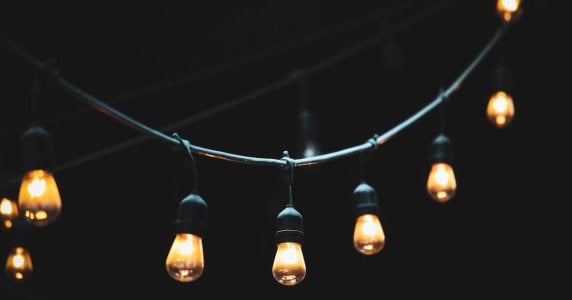Attention, Victorians! Your electricity bills could skyrocket by 25% starting August 1–here's why
- Replies 10
A significant 25 per cent hike in electricity costs is about to hit Victorian households starting 1 August, thanks to a new ruling.
Amid the dire cost of living crisis, these inflationary electricity rates are likely to put a further drain on the household budgets of Aussies living in this state.
The rising rates come as part of a new ruling affecting households and small businesses. Although part of the National Energy Market (NEM), Victoria's default offer prices are determined by the Essential Services Commission (ESC), an independent regulatory authority.
Around 15 per cent of households currently on the Victorian Default Offer will be most hit by this price spike, paying 25 per cent more. This has been revised down from an initial forecast of 31 per cent.
With these new costs, customers can expect to part with an increased $1,755 this financial year, a significant leap from last year's $1,403.
Let us break it down for you: A default market offer is essentially the maximum price charged to households and small-sized business customers on standing deals and have yet to scout for a cheaper option.
For Victorian small businesses, the scenario gets even dicier: the yearly electric bill is projected to skyrocket from last financial year's $3,039 to a whopping $3,791 this year.
According to the ESC’s Kate Symons, the spike in the Victorian Default Offer mirrors the costs of supplying customers with electricity in the volatile wholesale market.
She said: ‘The Victorian Default Offer was created to support consumers who don’t want to or are unable to engage in the market to find a competitive market offer.’
‘It is a simple and transparent standing offer based on the commission’s independent assessment of the efficient costs to supply electricity to consumers,’ she continued.
Only a few months prior, the Australian Energy Regulator (AER) previously released the Default Market Offer for New South Wales, South Australia, and certain parts of Queensland. They stated that over 600,000 customers across these three states will be shelling out more from July 1.
The rate for residential customers will then see a price hike of between 19.6 and 24.9 per cent.
Meanwhile, small business customers should expect increases of anywhere between 14.7 and 28.9 per cent.
For Victorian households, there's yet another twist in the tale. Coupled with Victoria's aim to reduce emissions by 75 to 80 per cent by 2035, any new homes built from 1 January 2024 will no longer have access to the state's gas supply.
However, there is a silver lining: This ban is anticipated to save the average resident $1,000 on power bills annually.
So, while there may be a surge in your electricity bill this August, the wheels are in motion for potentially significant savings in the future.
On the bright side, aside from the potential long-term savings, switching from gas is a small step you could possibly take towards a greener, more sustainable future.
In the meantime, the Australian Energy Market Operator (AEMO) has predicted that households won’t catch a break on high bills until mid-2024, something seconded by Grattan Institute Energy and Climate Change Director Tony Wood.
While prices have indeed eased from the height of the country’s energy crisis last year, AEMO said they are still up from the first quarter of 2023 and are the second-highest Q2 figures on record.

What are your thoughts on this price hike, members? Share them in the comments below!
Amid the dire cost of living crisis, these inflationary electricity rates are likely to put a further drain on the household budgets of Aussies living in this state.
The rising rates come as part of a new ruling affecting households and small businesses. Although part of the National Energy Market (NEM), Victoria's default offer prices are determined by the Essential Services Commission (ESC), an independent regulatory authority.
Around 15 per cent of households currently on the Victorian Default Offer will be most hit by this price spike, paying 25 per cent more. This has been revised down from an initial forecast of 31 per cent.
With these new costs, customers can expect to part with an increased $1,755 this financial year, a significant leap from last year's $1,403.
Let us break it down for you: A default market offer is essentially the maximum price charged to households and small-sized business customers on standing deals and have yet to scout for a cheaper option.
For Victorian small businesses, the scenario gets even dicier: the yearly electric bill is projected to skyrocket from last financial year's $3,039 to a whopping $3,791 this year.
According to the ESC’s Kate Symons, the spike in the Victorian Default Offer mirrors the costs of supplying customers with electricity in the volatile wholesale market.
She said: ‘The Victorian Default Offer was created to support consumers who don’t want to or are unable to engage in the market to find a competitive market offer.’
‘It is a simple and transparent standing offer based on the commission’s independent assessment of the efficient costs to supply electricity to consumers,’ she continued.
Only a few months prior, the Australian Energy Regulator (AER) previously released the Default Market Offer for New South Wales, South Australia, and certain parts of Queensland. They stated that over 600,000 customers across these three states will be shelling out more from July 1.
The rate for residential customers will then see a price hike of between 19.6 and 24.9 per cent.
Meanwhile, small business customers should expect increases of anywhere between 14.7 and 28.9 per cent.
For Victorian households, there's yet another twist in the tale. Coupled with Victoria's aim to reduce emissions by 75 to 80 per cent by 2035, any new homes built from 1 January 2024 will no longer have access to the state's gas supply.
However, there is a silver lining: This ban is anticipated to save the average resident $1,000 on power bills annually.
So, while there may be a surge in your electricity bill this August, the wheels are in motion for potentially significant savings in the future.
On the bright side, aside from the potential long-term savings, switching from gas is a small step you could possibly take towards a greener, more sustainable future.
In the meantime, the Australian Energy Market Operator (AEMO) has predicted that households won’t catch a break on high bills until mid-2024, something seconded by Grattan Institute Energy and Climate Change Director Tony Wood.
While prices have indeed eased from the height of the country’s energy crisis last year, AEMO said they are still up from the first quarter of 2023 and are the second-highest Q2 figures on record.
Key Takeaways
- Victorian households are set to experience a 25 per cent increase in their electricity bills from Tuesday.
- The increase results from a new ruling by the Essential Services Commission, affecting households and small businesses on the Victorian Default Offer.
- This comes amidst an existing cost of living crisis and will see the average increase of electricity cost for households jump to $1,755 this financial year.
- The announcement that new homes built next year will be unable to connect to the state’s gas supply is one of the measures taken by the Victorian government to mitigate the current crisis.
Last edited by a moderator:









